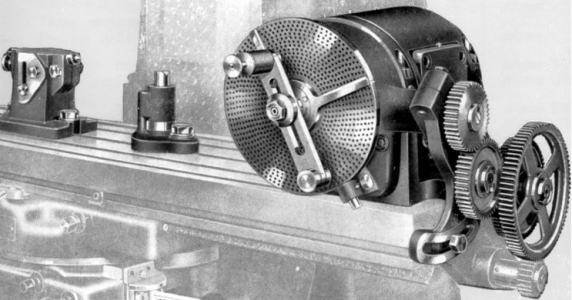Re: Universal sub-head for VN
I'd appreciate if you would please elaborate on the dividing head/subhead combo.
I've been running a VN6, with a 6inch Grizzly RT, index plates, and tailstock ....
Daryl
Hi Daryl.
I wanted to take a day or two to frame some thoughts. I'm no expert. I've had the luxury of both a
formal and "hands-on" machining education. I'll try not to get dragged into debating "my opinions".
1) The hardest part I ever had to make was an oval. In my mind its way tougher than any gear.
{It was a hand knob re-design for a turret lathe early in my engineering career. The task of developing a
design and production process was given to me -- as a test -- by my boss; who wanted to gauge
my familiarity with tool room methods and practices.}
Beziers {compound curves in one to many planes} "drag you into" dead zone; repeatibilty; backlash;
error measurement; and radial resolution {not to be confused with precision} issues in a way that few
linear part features ever will.
2) A dividing head has ONE feature that improves it over a simple rotary table; coincident action w.r.t
its drive axis. That assumes its used to create "concurrent" axis motion between its polar and lateral axes.
Rigging a rotary table to perform this task "requires" some sort of computer numerical control of the polar axis --
or a change gear transmission of similar/greater complexity Part of the transmission is "built-in" to many dividing
heads.
3) Polar machining is made more difficult by lack of space for a 'decent' linear vernier. I once bought a radial optical
comparator table from a grinding shop the did ~2" parts. The vernier on the table -- used for photometric comparison of
angles -- was 24" in diameter! Hairlines can only be so thin -- and still be useful. It is also quite tough to do "odd"
partitions {7ths; 13ths} using a linear vernier. So making the vernier "wheel" REALLY large when compared to the
workpiece is one way of solving the radial resolution problem.
Fabricators of large parts do this all the time. I've seen errors on frames of buildings approaching "horrific" because
the contractor didn't know enough to project his layout lines a reasonable distance. Framing a 48 inch wall
at 82 degrees can be fraught with errors at "tape measure" accuracy. If you project the string out 20 feet the
1/8"? 1/16"? tolerance zone is 1/5 the angular error!
So a dividing head gives us the capability to rotate part features a known and precise radial distance --
in a relatively
compact package. For the same reason we use lead screws -- to get the vernier to rotate a reasonable distance
for the spacing/movement required. This improves the resolution of the vernier. Resolution is one important component of
precision.
So while I
have a rotary table; in many cases its just plain easier to get the radial
resolution on a '40:1 geardown' DH. I can move
a DH 1/4 of a degree in two seconds {one pin hole on a 36 segment wheel}. Using an RT radial vernier I can get it CLOSE -- but its really
limited by table size. And if the vernier has a 10:1 hash -- pretty standard -- I must INTERPOLATE the halfway mark between the .2 and .3
hash mark to get one quarter of a degree!
---
Three axis milling is constrained by the need to rotate the tool. So at every step you have to deal with the fact that there is little
correspondence between the shape of the tool tip and the part feature. {End mills don't just make holes.}
Unlike a fixed tool {lathe; shaper; broach etc} where the shape of the tool tip is "inherited" by the part one must always reconcile the
presentation of tool --with all its motions-- to figure out what the resulting part feature becomes.
A sub-head -- in my mind -- is just one more "degree of freedom" for the presentation of the tool to the workpiece. Since milling is fraught
with competition between work surface and work-holding features that 'degree of freedom' takes on a particularly special significance --
there are places where it will ENABLE us to make the part feature that could not otherwise be reached. Or to a level of coherence that
might otherwise be compromised.
So in my thinking about "auxiliary axes" I tend to get VERY 'part feature specific' and then try to generalize the set of features into a
known vocabulary of names for their "container" parts -- NOT the other way around.
So its hard for me to think about "gears" as a class of entities without de-constructing the class to its component features.
IOW I cannot say anything "in general" about the usefulness of a sub-head 'for making gears'.
BUT if you want to talk about making 'ramped fillets' -- we can readily contrast and compare sine block setups and their accuracies
{one method of setting up a ramp} with the vernier {another method} type resolution of a sub-head. And perhaps explore methods for setups
that take us to "the next level" of accuracy on a sub-head setup -- something more like 1/10th of a degree rather than the interpolated 1/2 degree
that most offer. Its a "feature orientation" that allows us to compare apples and apples.
After 45 years of making "special" parts; finding/fixing other people's setup and machining errors; designing trick stuff for a living in various domains;
I could go on and on -- if you think this brief note doesn't do that.
hope this starts a good conversation. as always YMMV.
--frankb




